Toledo is one medieval fortress of a city, situated on a bluff and encircled by the Tagus River. Its cobweb network of streets must have been a dizzying deterrent for any invaders who dared to enter. Crowning the labyrinth is the castle known as El Alcazar. Its four pointed spires pierce the air making a wicked skyline. In the Middle Ages, Toledo was known as the ‘City of Three Cultures’ due to the legendary coexistence of Jews, Muslims and Christians. The historical remanence from this trio of cultures makes Toledo a fascinating place to visit today.
Several AVE high speed trains leave daily from Madrid to Toledo. The trip takes half an hour. I highly recommend staying the night to experience the full magic of this city.
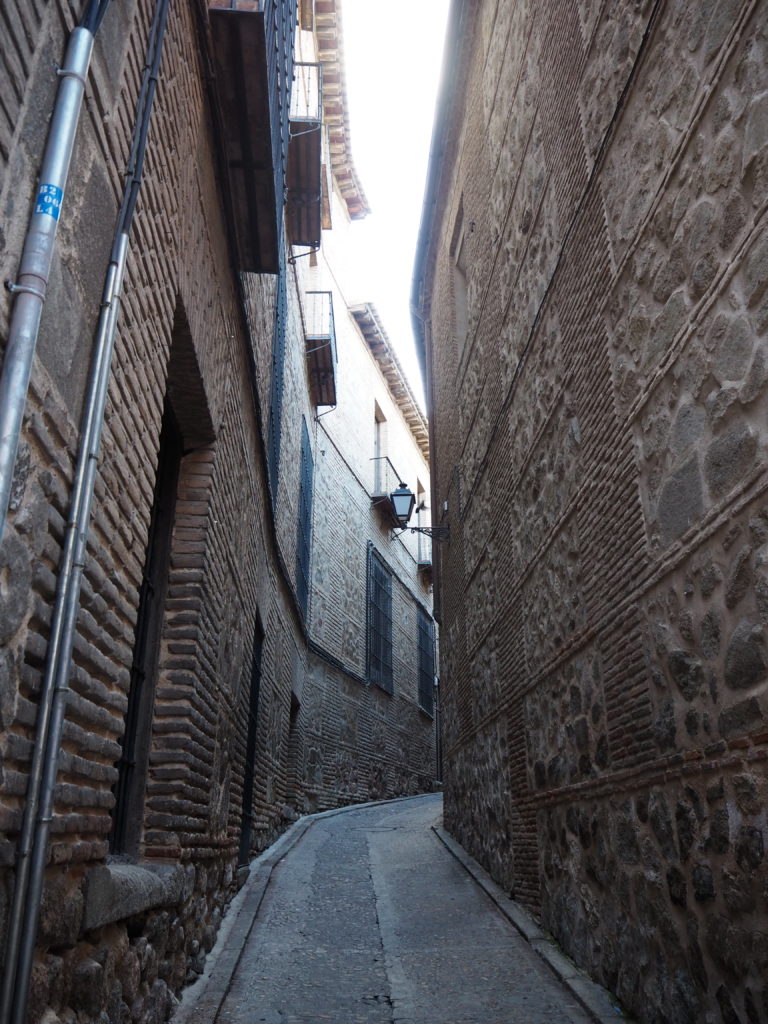
As we stepped through the horseshoe archway at the Toledo train station, we spotted a line of taxis. The driver of the next available car helped us toss our luggage in the back and off we went. We passed under one of the massive city gates bearing the imperial coat of arms with a two-headed eagle. Our driver pointed out some historical highlights (in Spanish) while we curved around the city walls. I watched from the taxi window as we whipped through narrow cobblestone roads on a steep incline with only a sliver of space between us and the buildings on either side. It’s a phenomenon that driving can actually happen in these tiny lanes that were meant for horses and pedestrians. It was unusually chilly for June, when we arrived at Hotel Santa Isabel. This place was transformed into a hotel not long ago. It used to be a noble house where a knight commander lived in the 1400s. It’s just around the corner from the historic Jewish Quarter and the Cathedral. Also, it has a rooftop terrace offering some of the best panoramic views of the city.
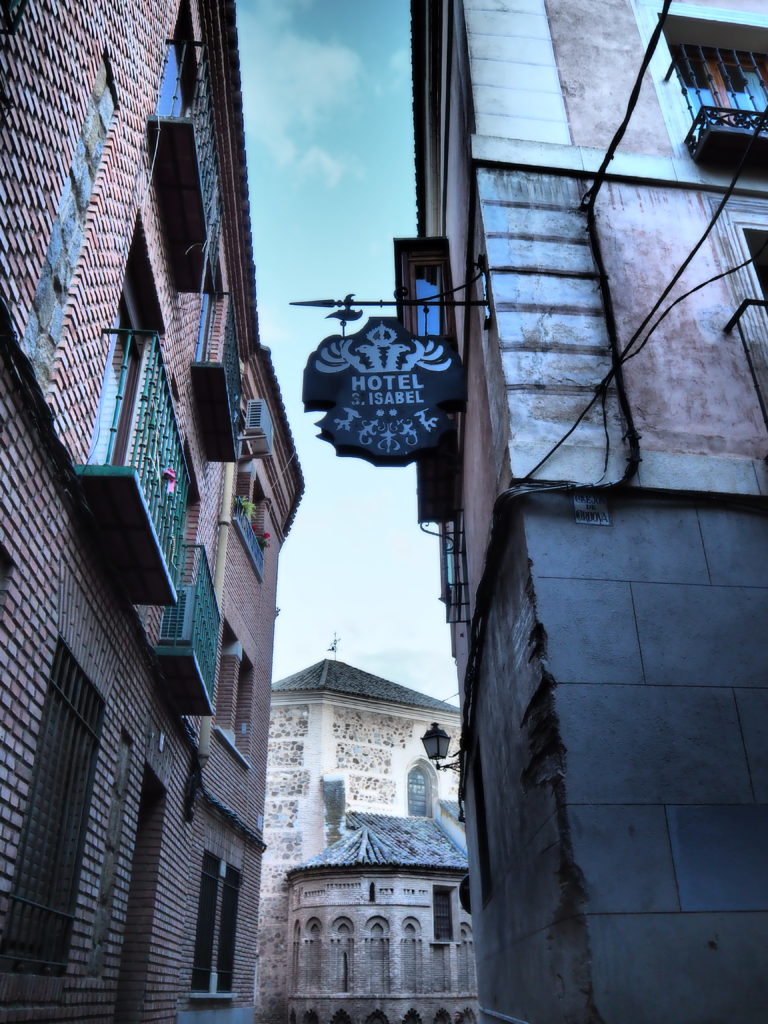
It was already late afternoon when we headed out to see the Cathedral. Saint Mary of Toledo is a High Gothic cathedral from the 13th century.
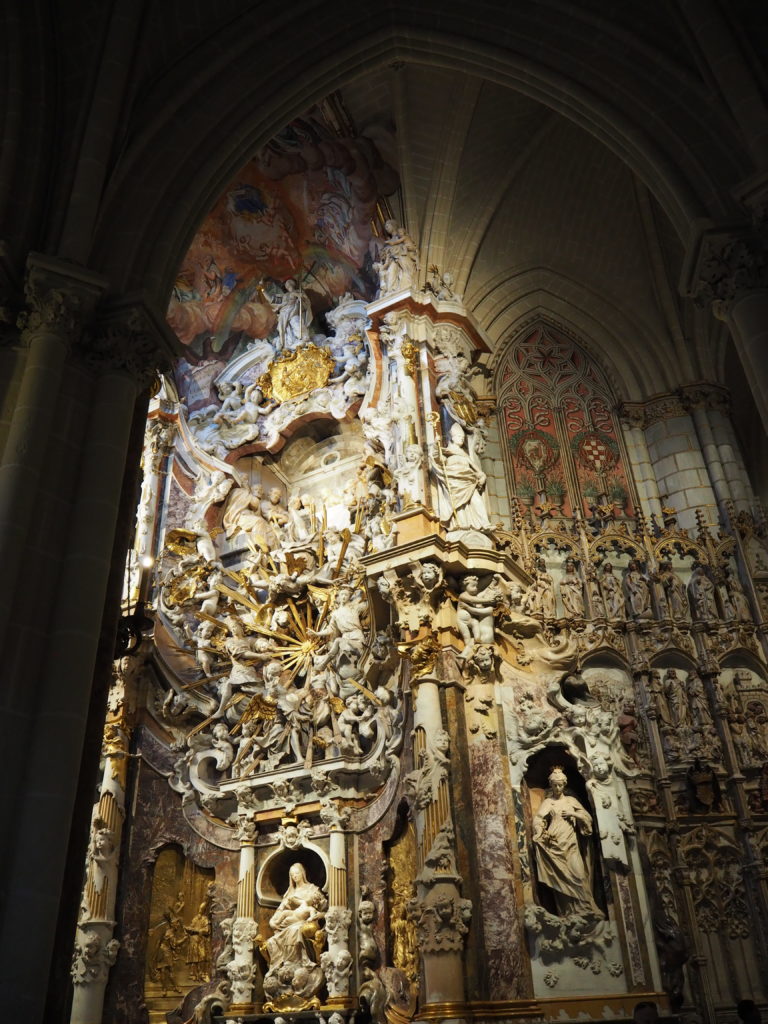
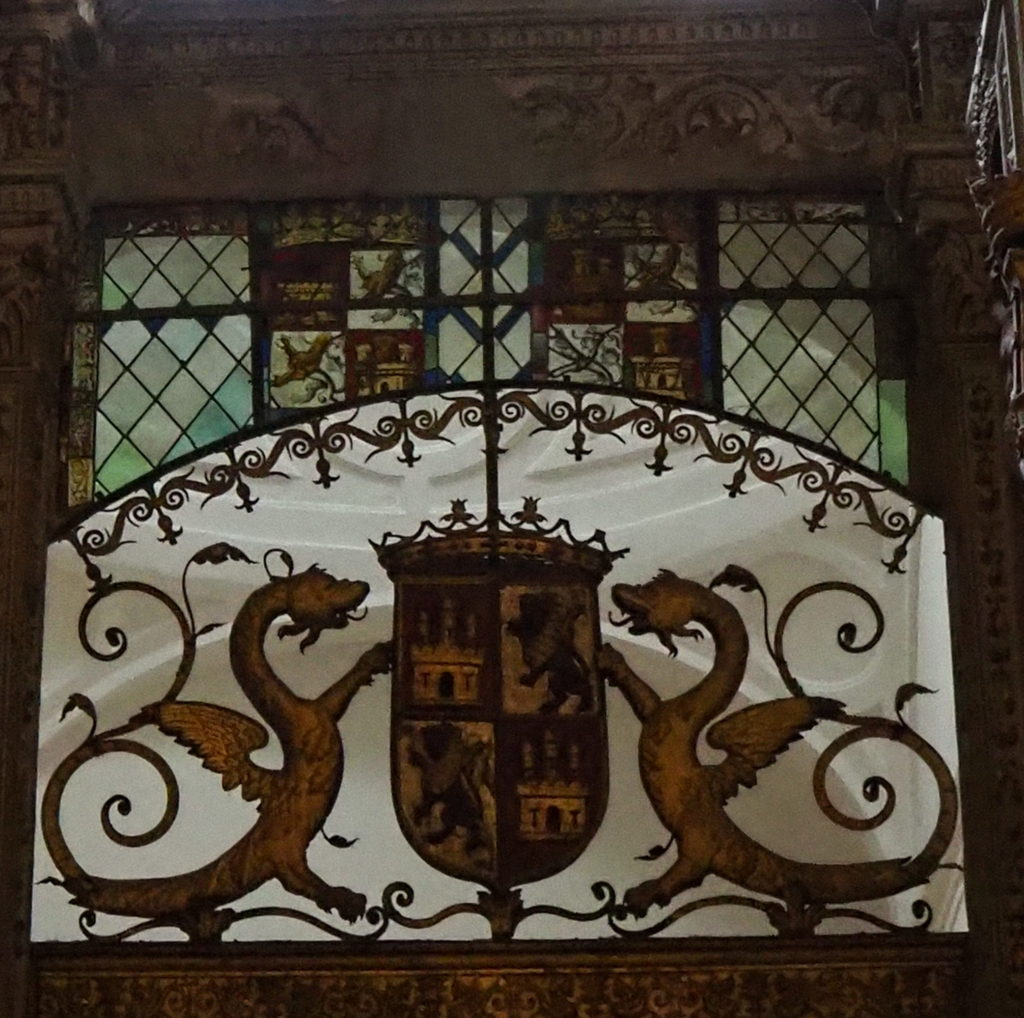
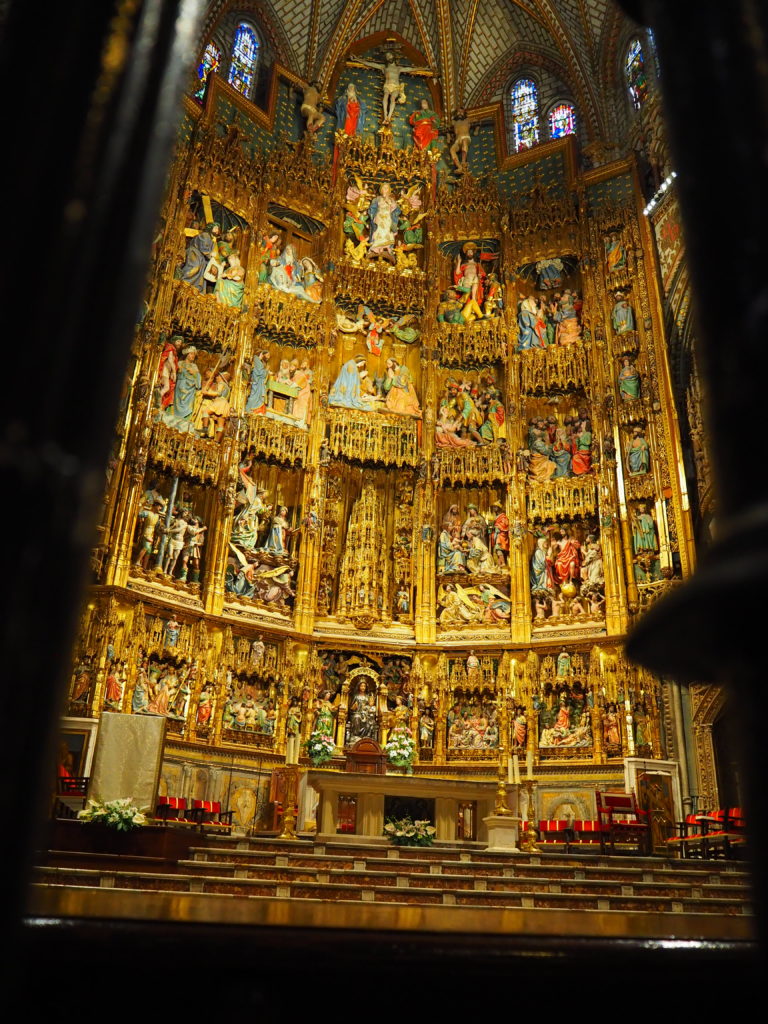
Walking around Toledo, you’ll notice a great number of sword shops. This city has been a sword making center since 500 BC. Toledo supplied swords to Roman soldiers in the Punic Wars of the 2nd and 3rd centuries BC. Yeah, that’s legit. You have to admire the serious dedication to the craft.
The other item you’ll see in most of the shops is damascened jewelry, with gold or silver patterns inlaid on darkly oxidized steel. I couldn’t resist the beautiful earrings. I knew I’d be taking a pair home.
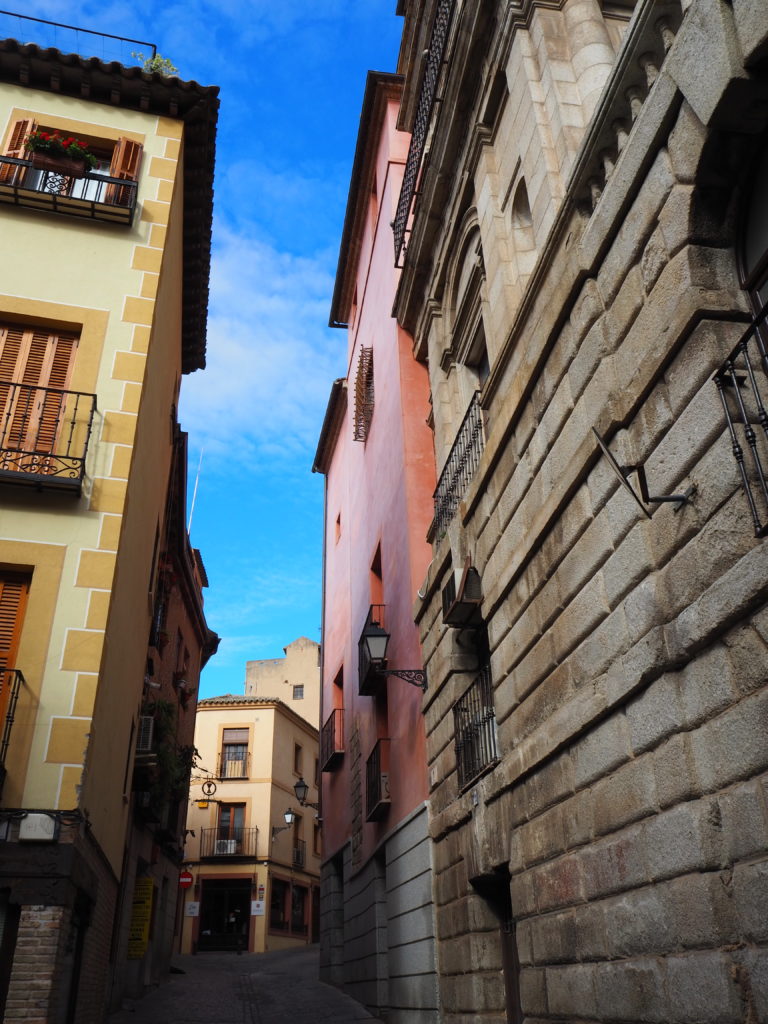
No trip to Toledo is complete without seeing artwork by El Greco. Domenikos Theotokopoulos, nicknamed El Greco (the Greek) was a painter from Crete. He moved to Toledo where he produced some of the greatest works of the Spanish Renaissance. His paintings are distinctly stylized with a unique use of color. I love the way that the author Nikos Kazantzaki describes El Greco’s paintings in his book, Spain. He said that in El Greco’s works, “the light soars as though from some tragic moon” and that the “forms are lit by some great flash of blue lightning.” His work can be seen at the El Greco Museum, but I would make it a priority to see El Greco’s masterpiece, The Burial of Count Orgaz, in the church of Santo Tome.
Santo Tome was already closed for the evening, so we planned to visit it the following day. In search of wine and tapas, we seated ourselves on the patio at Meson Solarejo. Since it was so cool out, we ordered carcamusas, a traditional pork and vegetable stew. It was a satisfying and flavorful dish with a glass of garnacha.
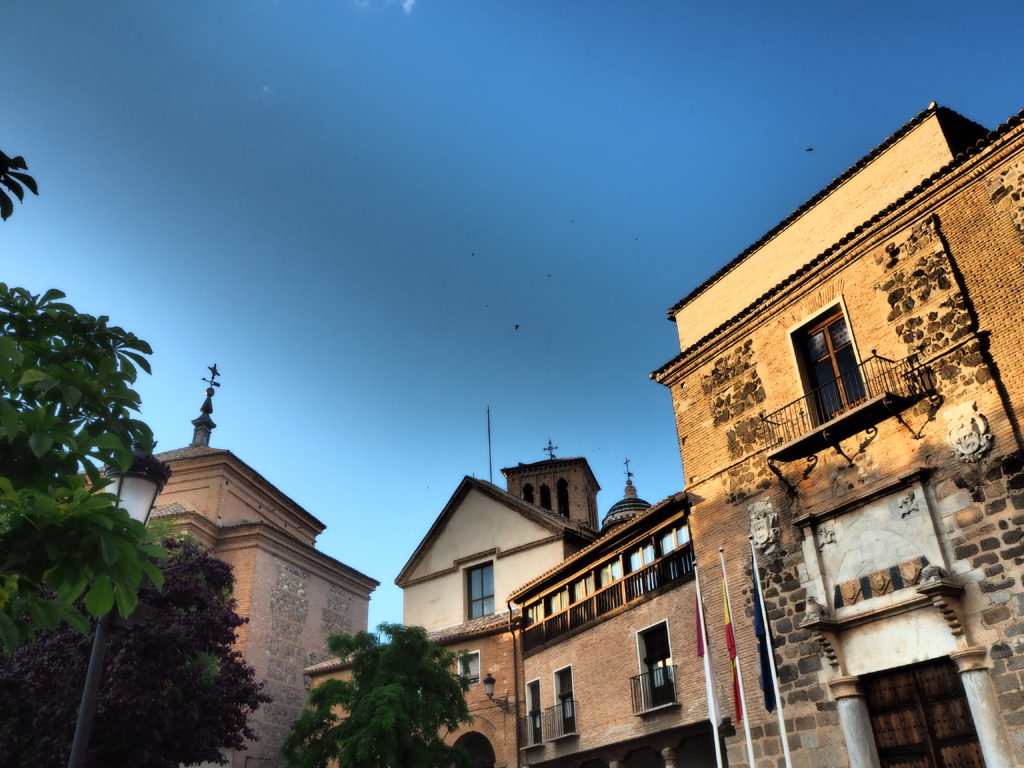
After dinner, we explored the city a little more. It was enchanting to see Toledo in the evening when the air took on a ghostly silver quality like the light in an El Greco painting.
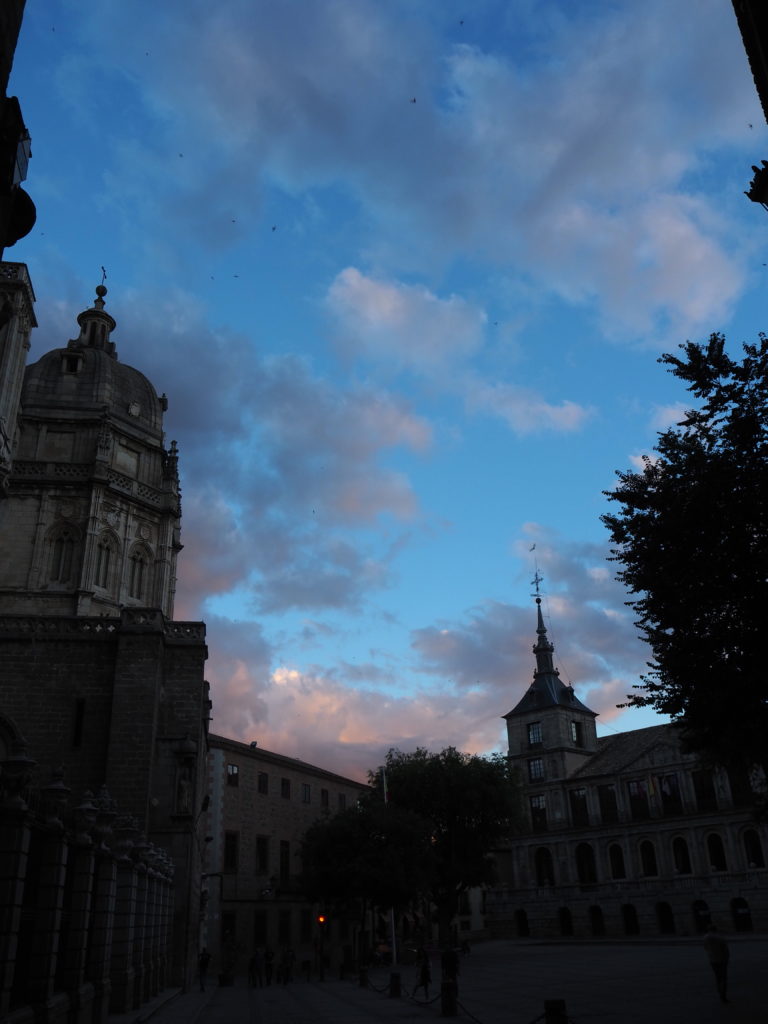
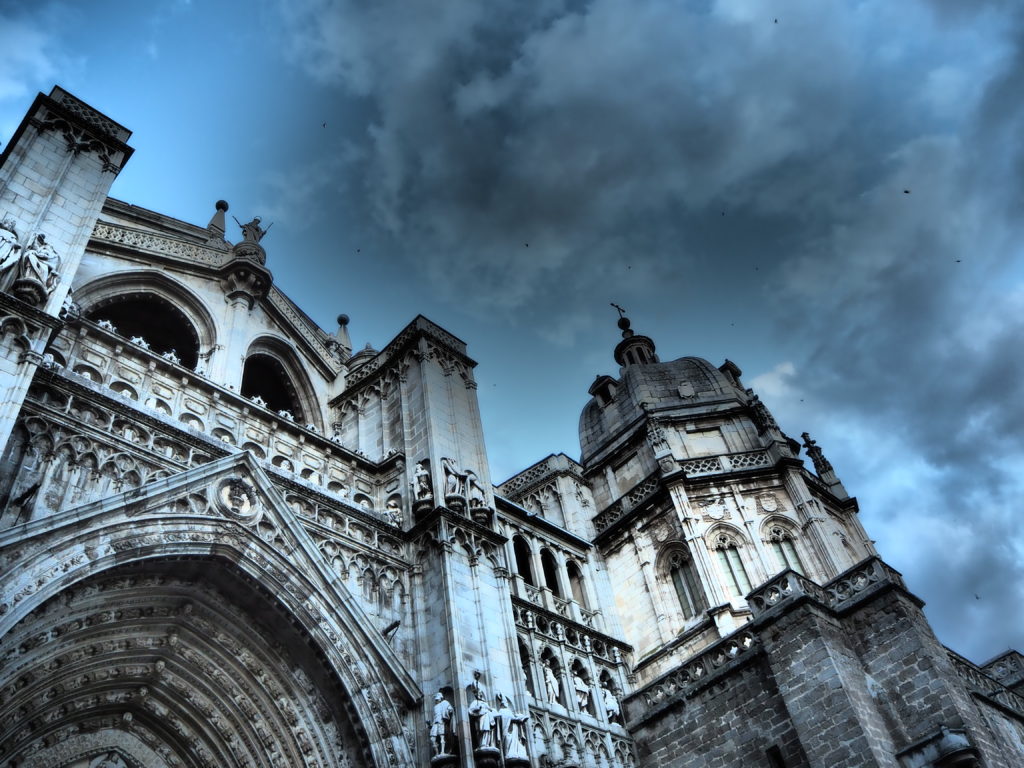
We went to the rooftop terrace at Hotel Santa Isabel to gaze at the celestial nightscape.
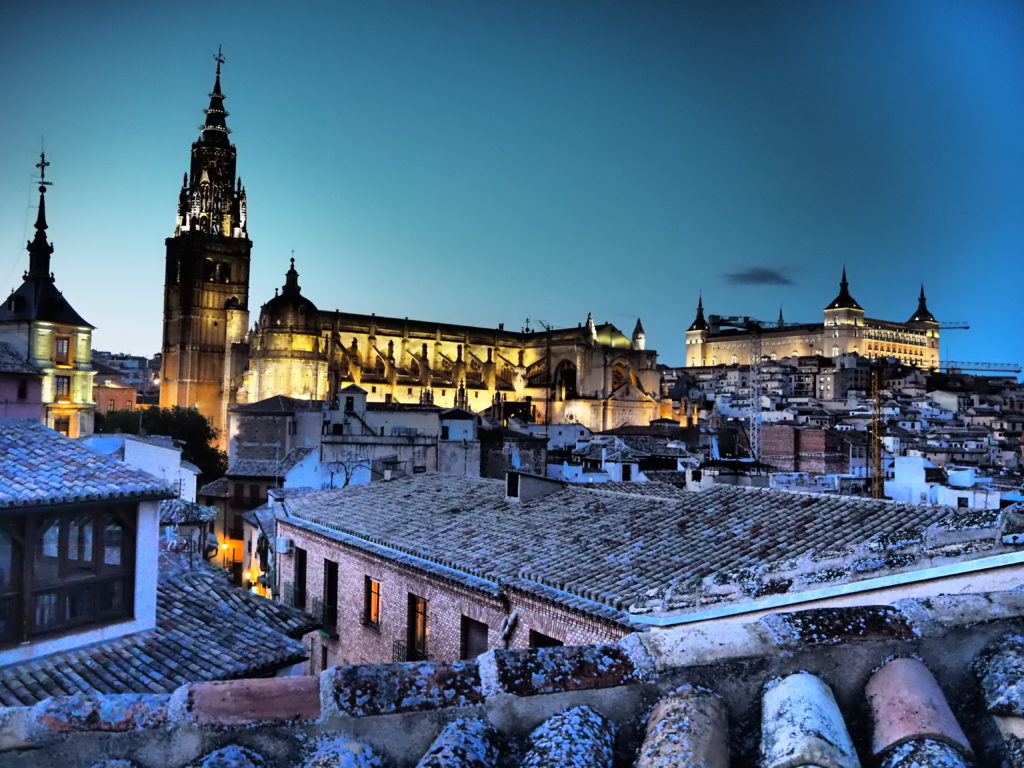
A trailing arc of bird cries glistened in the morning quiet. I had slept so well in the cozy room. After some generous servings of jamon and tomato marmalade on toast, we set out to wander the town.
From Zocadover Plaza, we passed through the keyhole archway known as El Arco de la Sangre. On the other side is a staircase where a statue of Spain’s literary master, Miguel de Cervantes, stands proudly at the head of the eponymous street of Cervantes. Toledo is the capital of Castilla-La Mancha, the famed land of the wandering knight from Cervantes’ most famous work, Don Quixote.
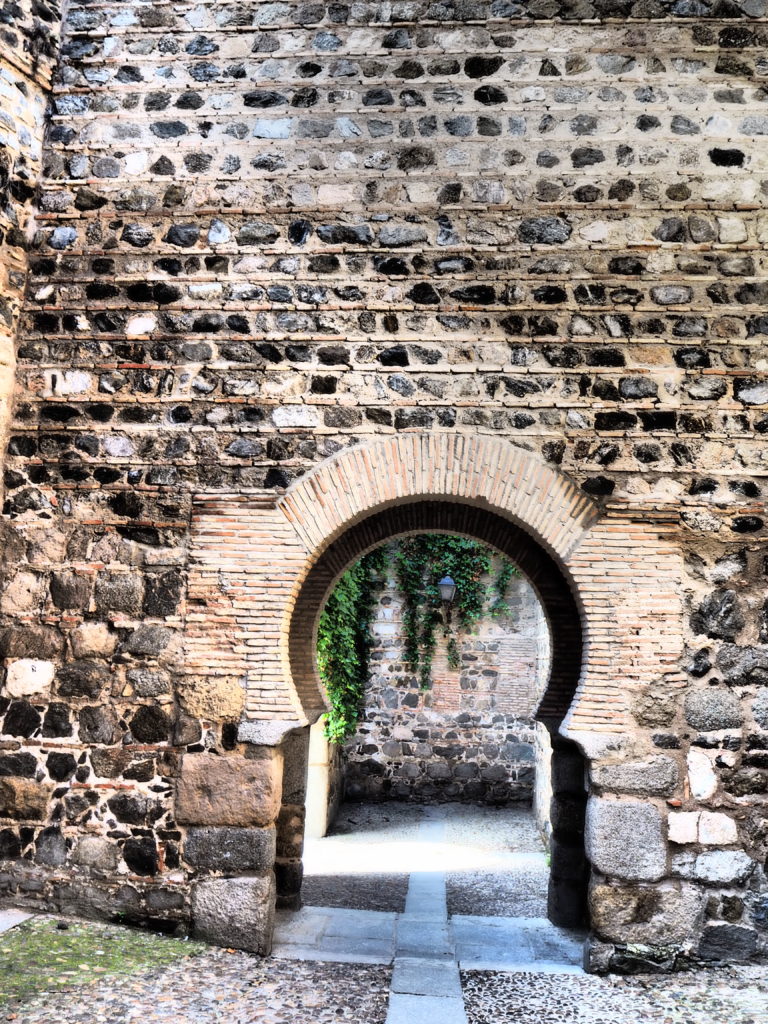
We made our way down the sloping street and several sets of stairs that eventually lead to the Puente de Alcantara, a Roman Bridge over the Tagus River.
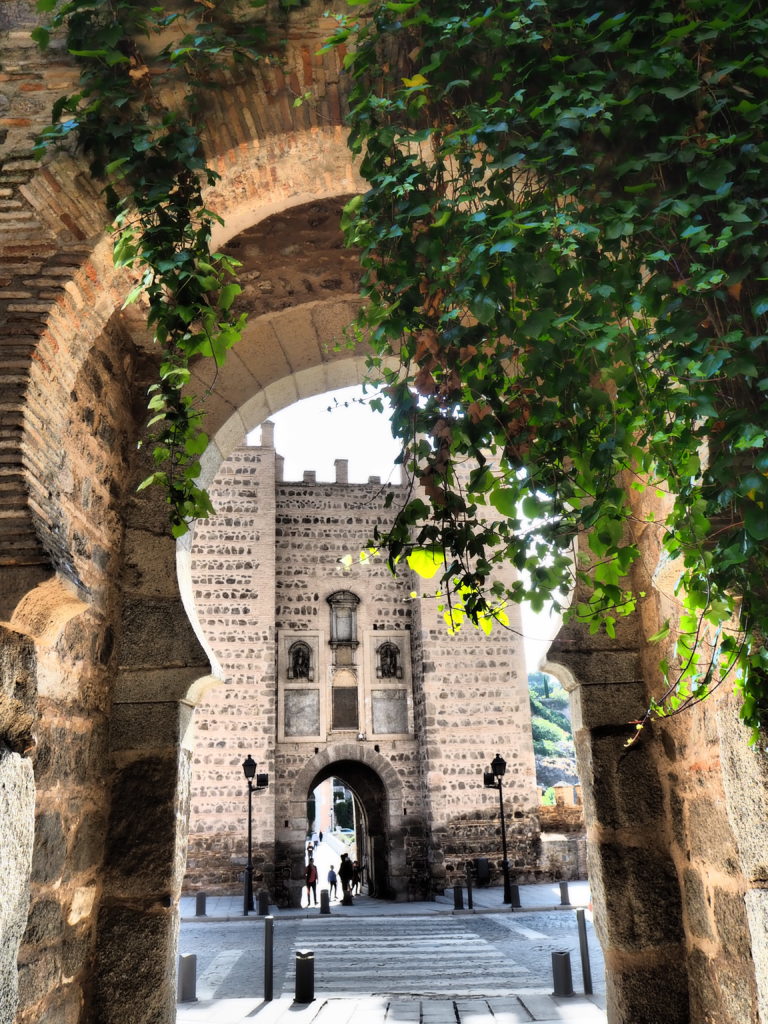
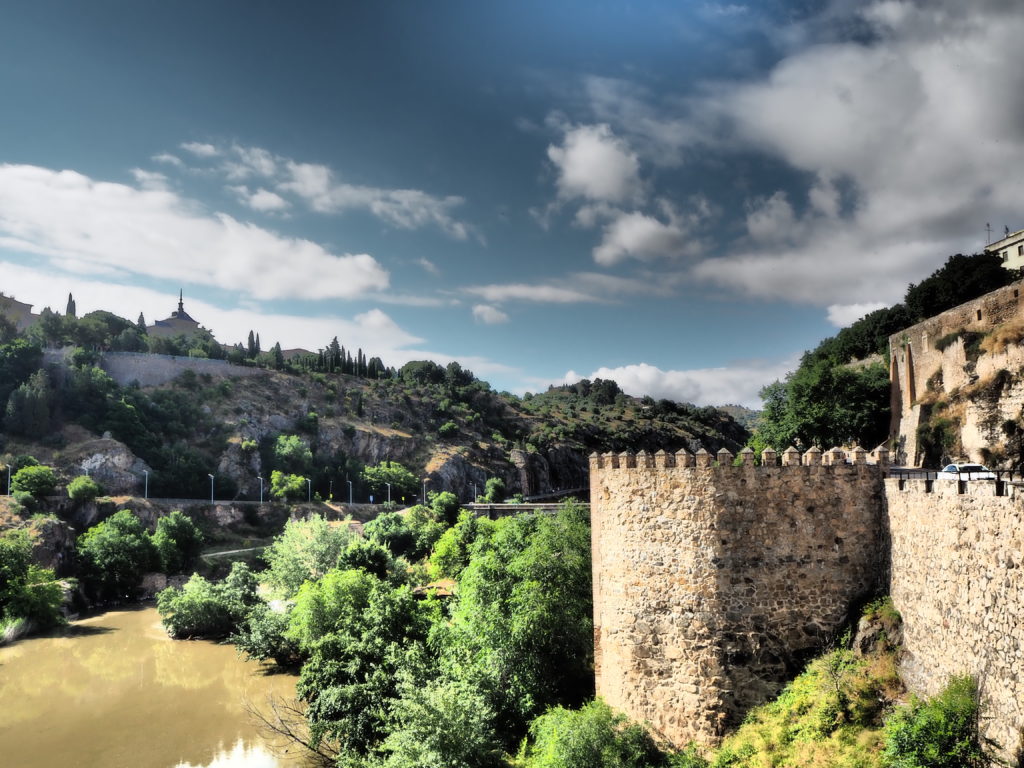
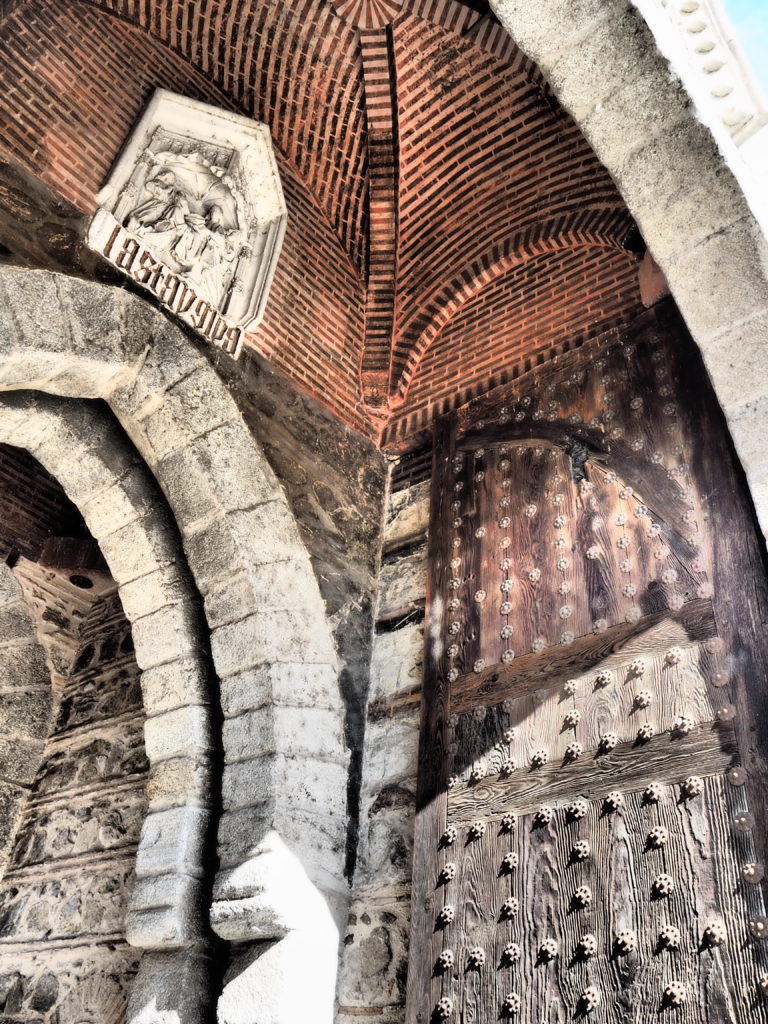
Sunlight radiated through the crisp air and the clouds seemed to have a supernatural charge about their arrangement.
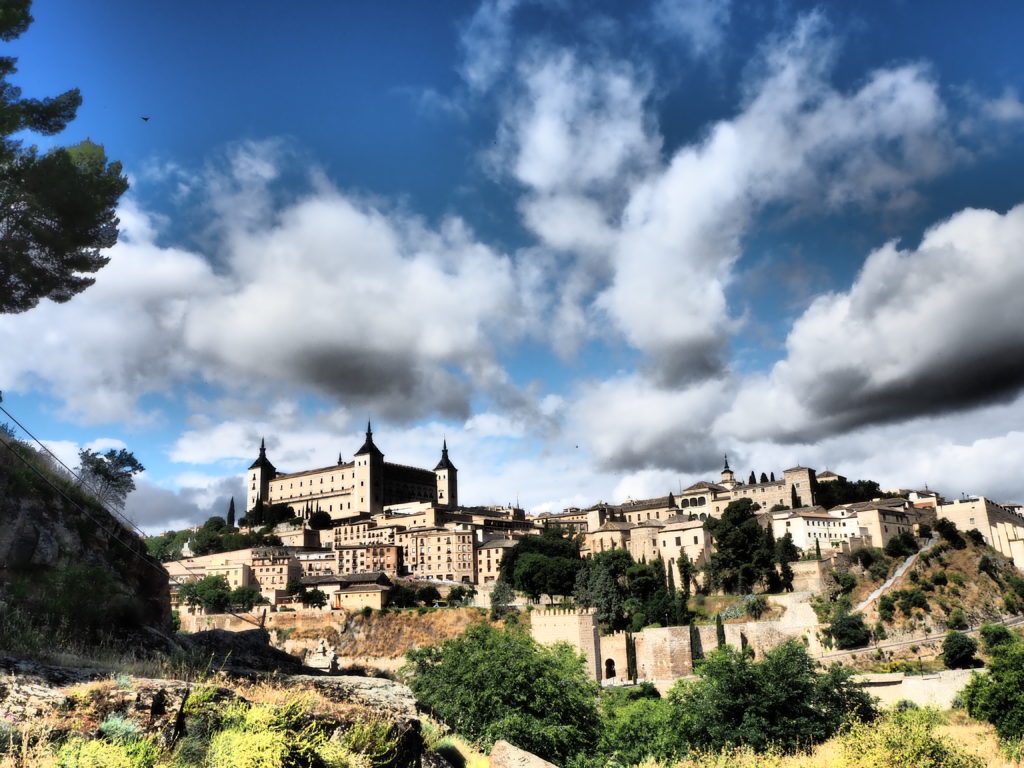

After taking in the majesty of Toledo from the other side of the river, we ventured back into the old town to find Plaza del Conde.
I stepped into a shop to buy some earrings with the traditional damascened inlay and suddenly heard a thundering of trumpets. An approaching procession of people came through a haze of incense, hoisting a giant golden altarpiece, struggling around a tight corner. The shop owner explained that this parade was part of the Corpus Christi Festival, a tradition that dates back to the thirteenth century. Of course it does. It is celebrated every year, sixty days after Easter Sunday. We enjoyed this surprise event!
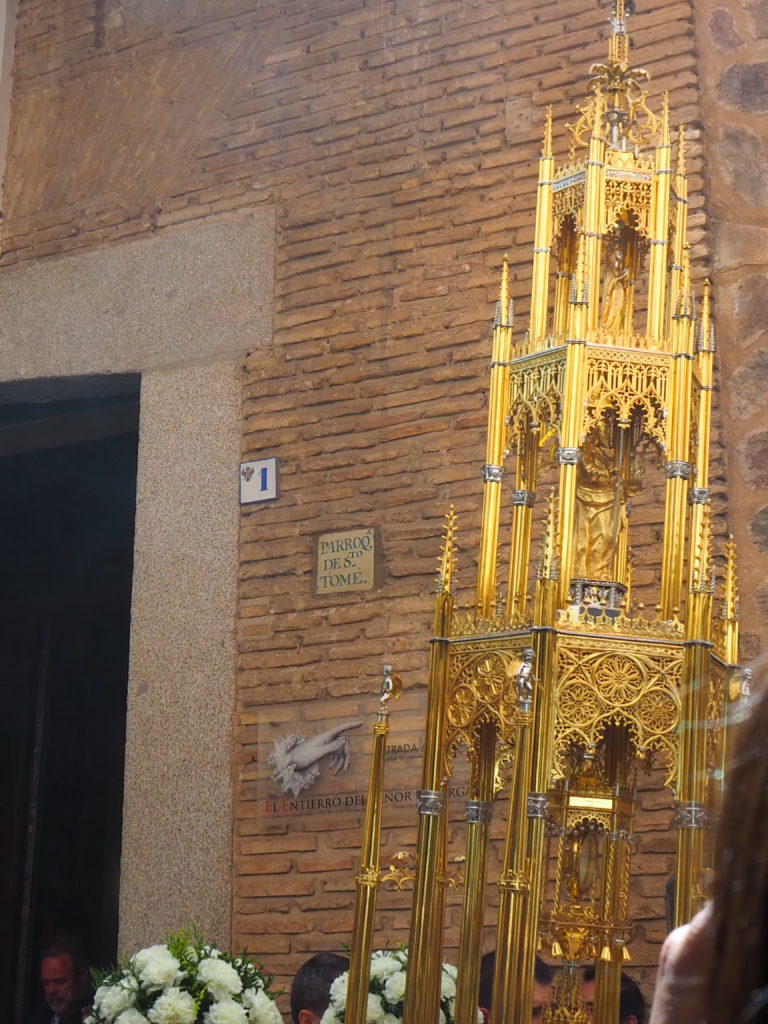
I have been to Toledo several times. It is hard for me to go to Spain and not visit this city. My ideal formula would be to spend about three days seeing the mosques, synagogues, churches and ruins. It was voted Spain’s capital of gastronomy in 2016, so there are some amazing restaurants. It remains one of my favorite cities.
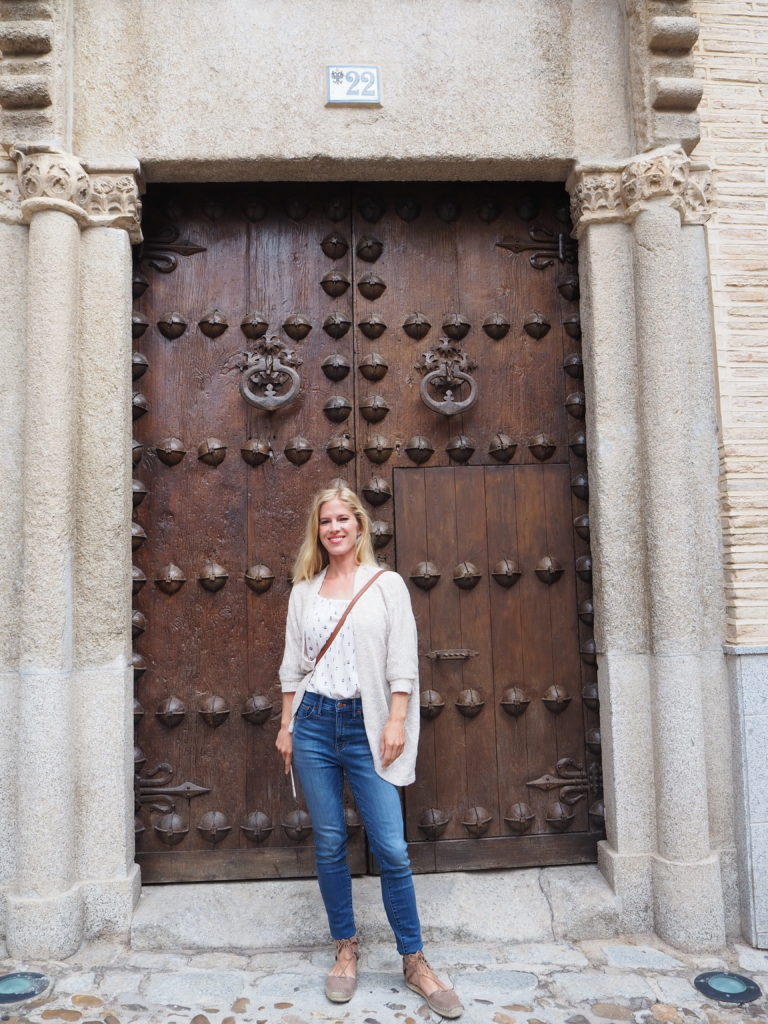

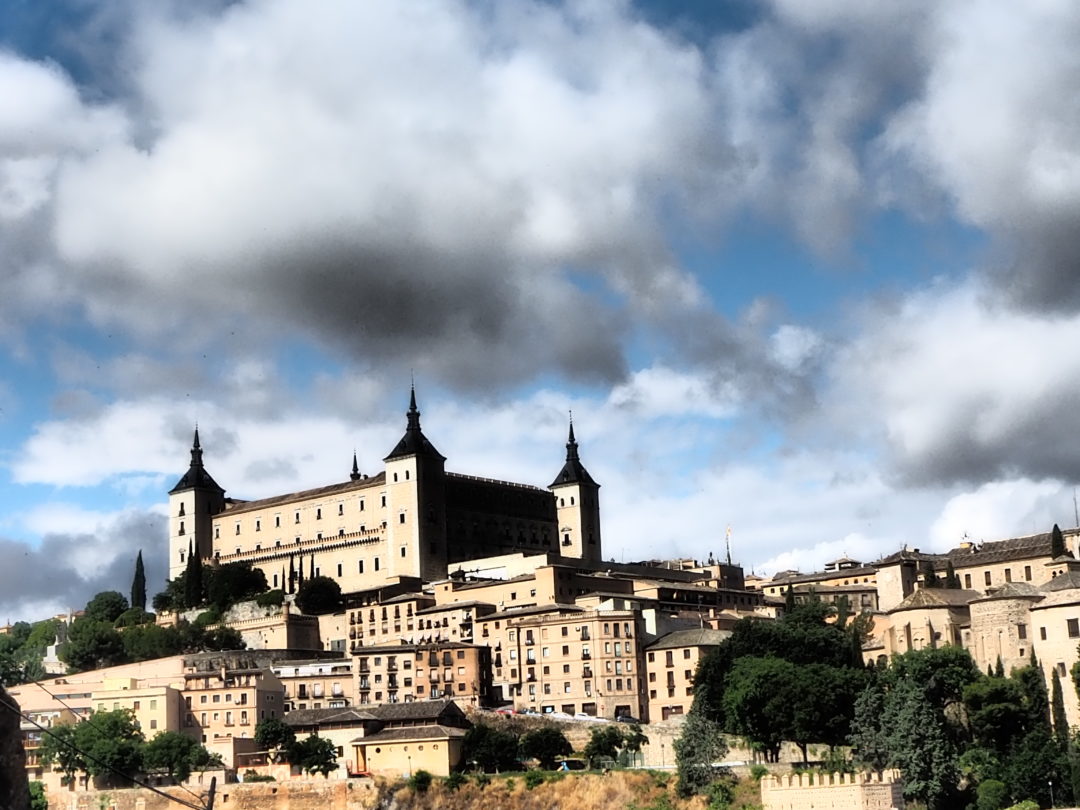
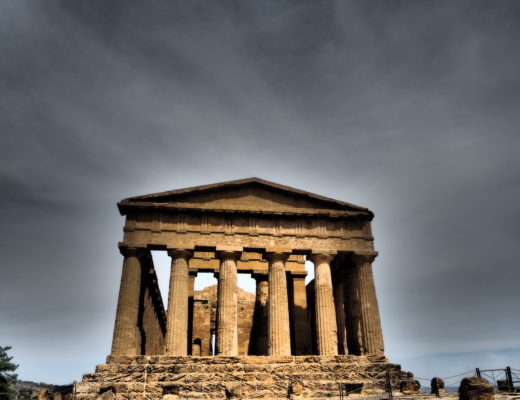
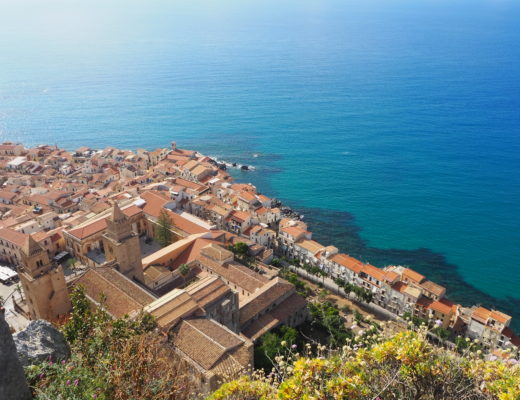
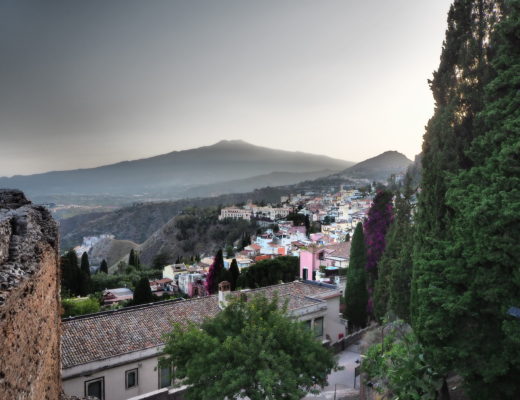
No Comments